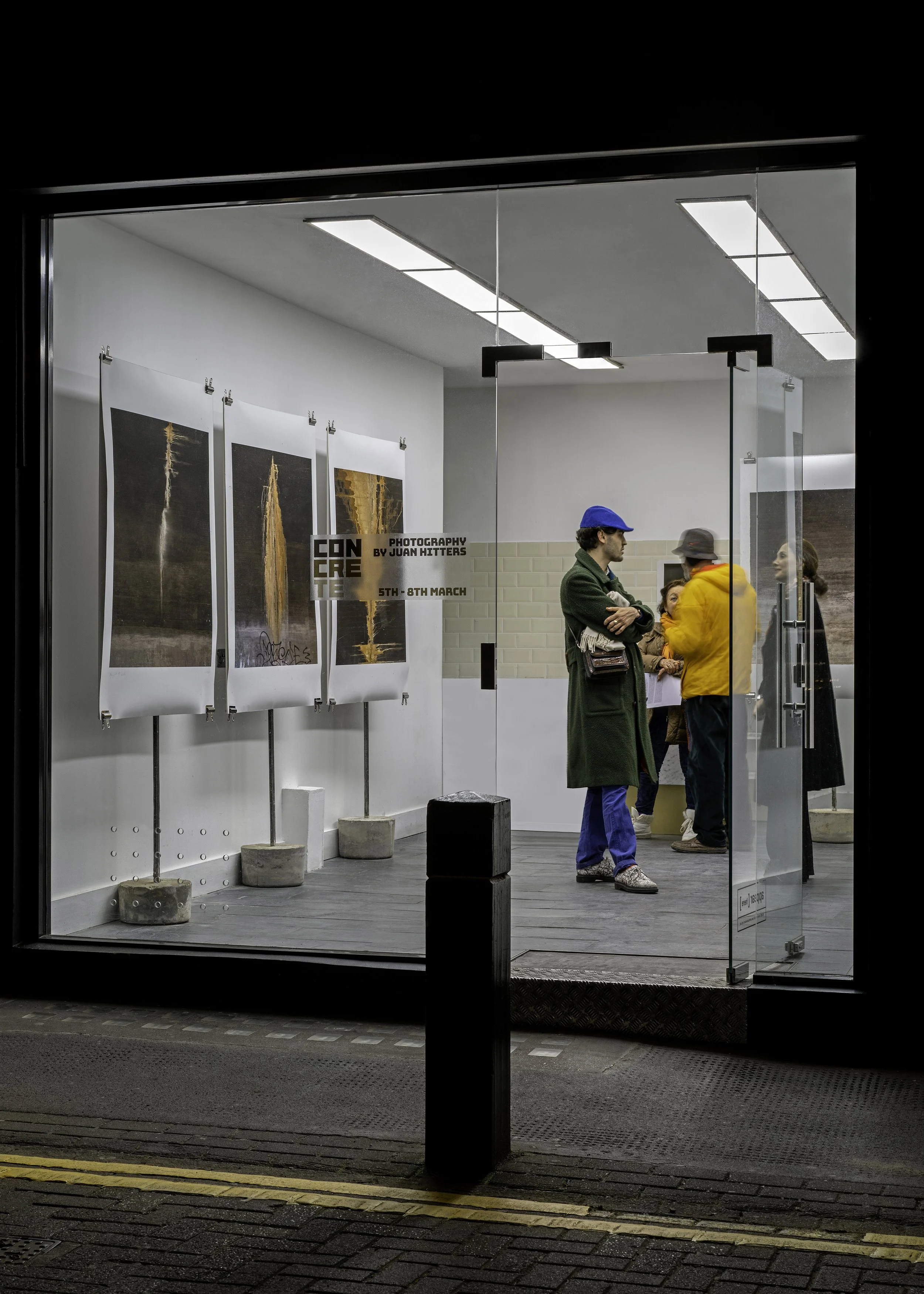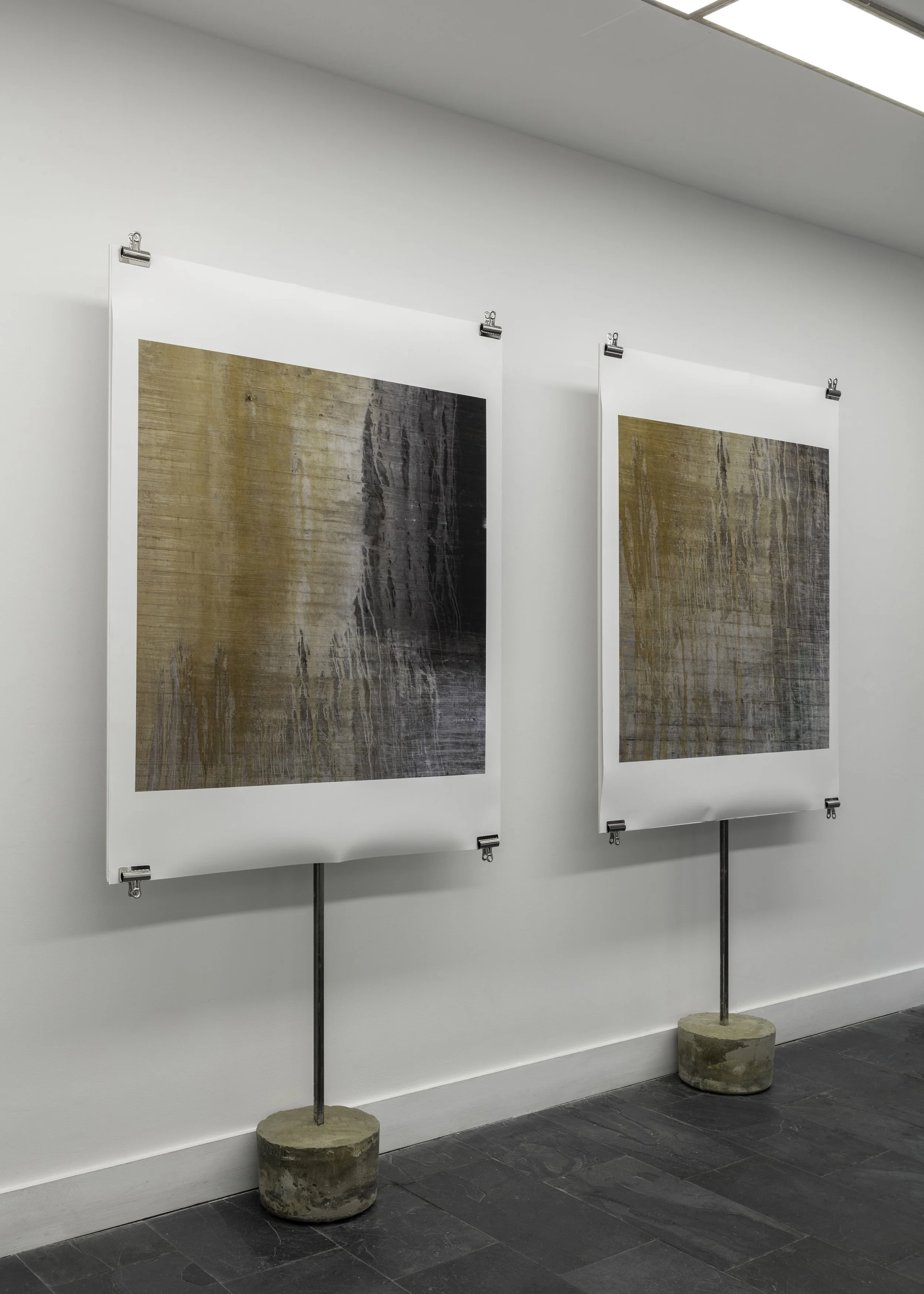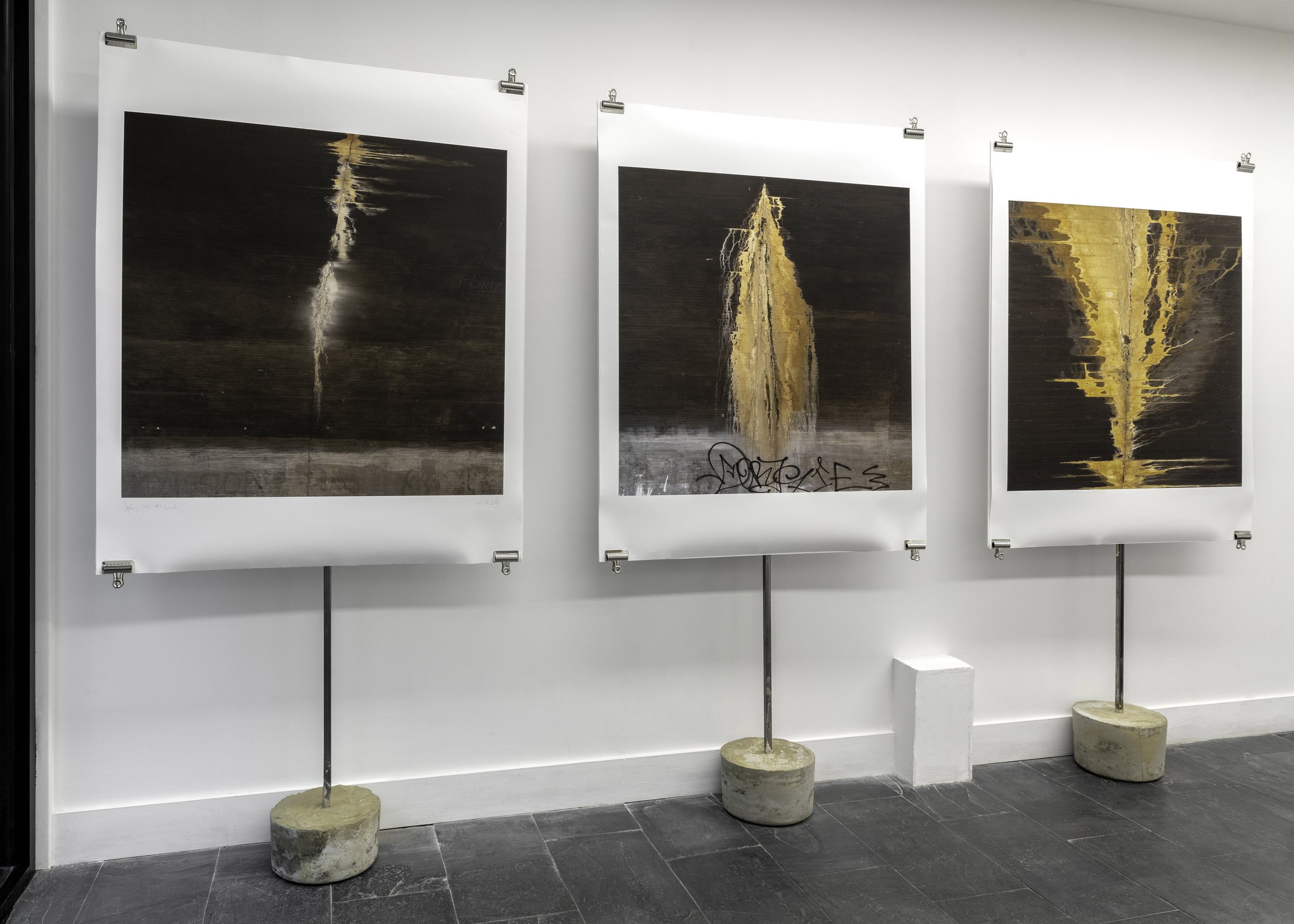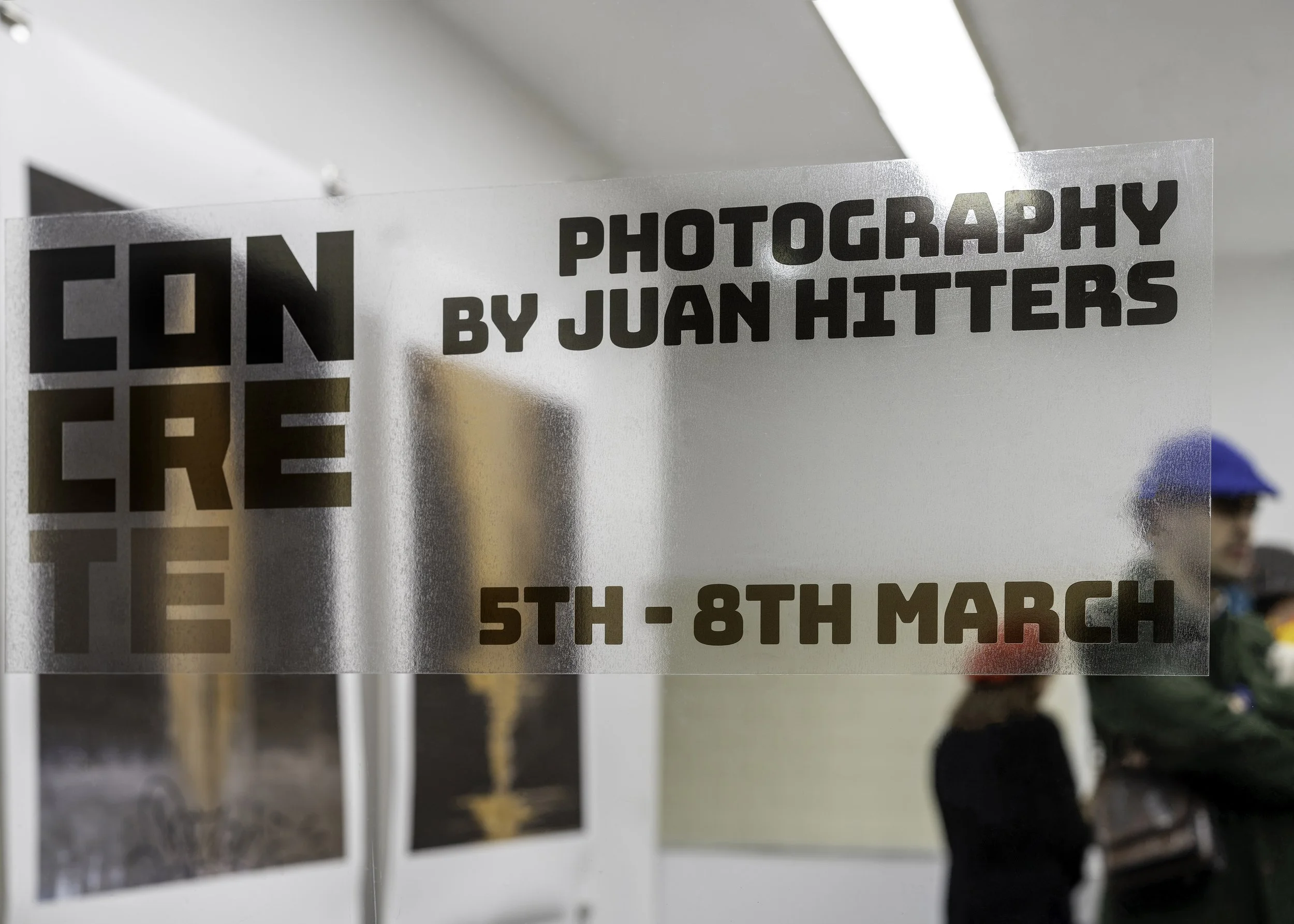CONCRETE (London, 2020)
"My humble model for progress is the reclamation of land. Which is repeatedly, never-endingly retrieving what is lost. A dogged, vigilant business. A dull yet valuable business. A hard, inglorious business.” - Graham Swift, Waterland.
In his first solo London exhibition, Concrete (2020), photographer Juan Hitters (b. 1966, Buenos Aires) presents a selection of images produced in Australia in 2013. The exhibition is comprised of six 1 x 1 mphotographs and are all editions of fifteen, printed on cotton paper. The first one of the series, Concreto #1, was awarded the Gran Premio Adquisición (Grand Prize Acquisition) in the 103rd Salón Nacional de las Artes Visuales (Photography) in Argentina. The six artworks hint us to the location where the images were taken; a railway tunnel near the central station in Sydney - a place of anonymous transit and quotidian activities. The series is reminiscent of unfinished abstract paintings created by mineral deposits leaking through the structure’s cracks. For Hitters, buildings are like living organisms, and their ruptures are evidence of the impact of human encroachment on wildlife. He invites viewers to notice mundane fractures and the life that grows within them, through a seemingly impenetrable material such as concrete. Whatever the forces that contributed to these fractures, we see evidence that in the end, nature takes over.
Hitters’ photography aligns with discourses relevant to the contemporary art world, which include exploring living systems. Evidence of art moving towards living systems includes; Hicham Berrada (b. 1986) Mesk Ellil(“musk of the night), 2015-2019 in which he inverts the cycle of night-blooming jasmine plants in his installation of at the Palazzo Grassi, Venice; Dora Budor (b. 1984), I am Gong, 2019, whose installation at the Kunsthalle Basel explores how buildings are constantly animated through invisible movements and sounds throughout their interiors; and Angolan artist, Kiluanji Kia Henda’s (b. 1979) sculpture The Fortress, 2019, which alludes to the ephemeral nature of man-made structures. Aligned to the concept of living systems, Hitters departs from the aforementioned artists by choosing photography as a medium while still capturing the life within concrete constructions. Through these stills, he reminds the viewers of the ongoing uncontrollable changes structures go through and their vulnerability to nature’s continuous processes.
The curators aim to create a dialogue between Hitters’ artworks and the topics of ruptures - physical, psychological or historical, individual and collective. While ruptures can be seen as disturbances that divide, Hitters does not focus on the divisive nature of cracks, instead, his photographs present us with a message of unification. Through his photographs, he gives authorship to nature while inviting us to be silent witnesses of a suspended performance played out on the concrete, captured in-situ. Through the juxtaposition of synthetic and organic, he touches on the theme of ‘ephemerality’ while revealing scenarios in which “man designs but nature rules.” As so, we are witnesses of a blurring of a duel between the organic and the structured. This contrast reveals the fundamental quality behind his work: a codependence between humans and nature and an unsustainable rejection that the synthetic and organic stem from a common source.
— Text by Luz Hitters & Wil Ceniceros, curators.






